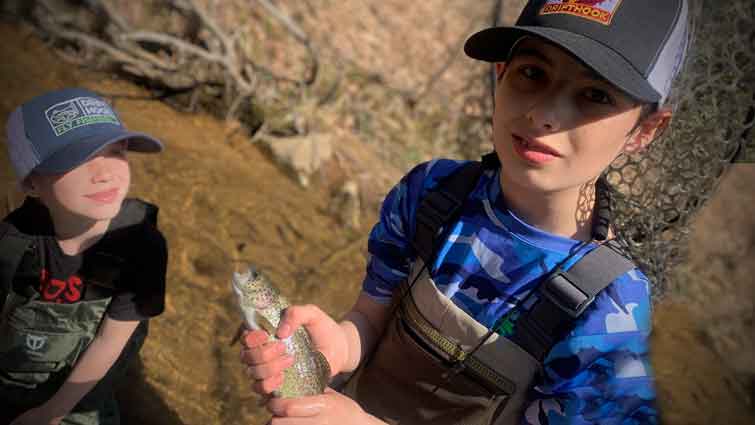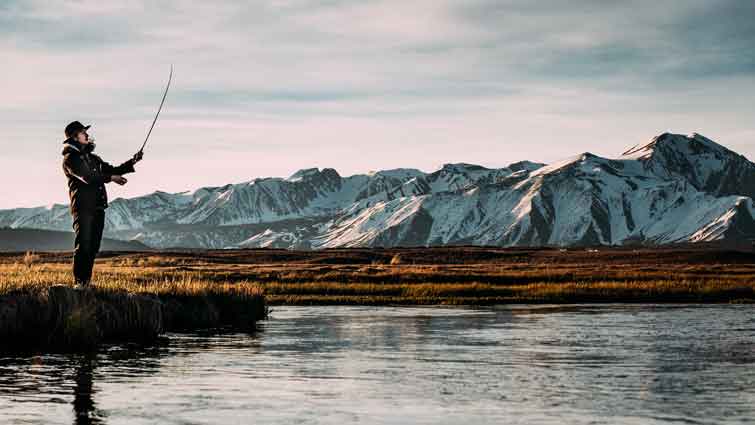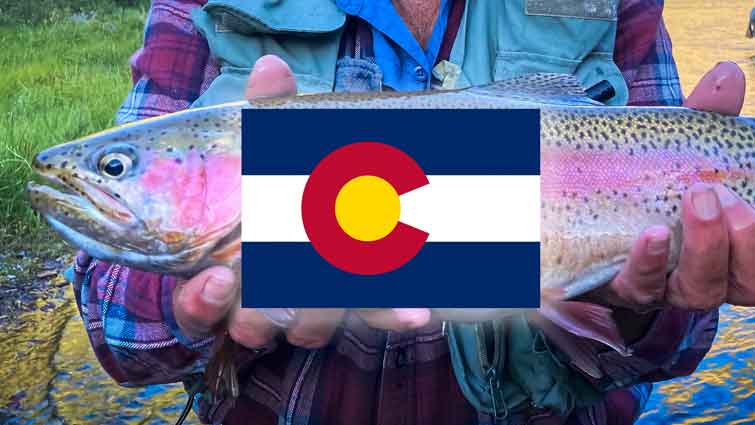Have you been fly fishing with kids before? If not, it's probably high time you give it a try! Who wouldn't love spending an afternoon out in the great outdoors surrounded by majestic nature and the beauty that can only be found in these moments?
You might already know these benefits if you've been fly fishing. However, there are some other things that shouldn't be missed when planning your next family vacation in the spring, summer, or early fall.
Sometimes, a simple lake trip can become an adventure through the woods or down a favorite creek. You can never be too safe!

Safety Tips While Fly Fishing with Kids
The best days on the water are safe days. It's important to remember that every time you go fly fishing with your kids, your priority is safety.
You should always be on the lookout for safety hazards and have a plan to prevent them. You may also need to buy equipment/gear to ensure it. Visit watersportswhiz.com for more tips and buying guides for fly fishing and other water sports-related activities.
However, before that, here are some safety tips for when you're fly fishing with kids to ensure a fun and relaxing experience on the water.

1. Fish Close to Home
Fly fishers are a unique bunch. They are often more into the outdoors and nature than most people. Remember that it can be dangerous—especially if you're in an area with more people than fish! Fly fishing is a great way to spend time with your kids, but safety comes first.
The last thing you want to do is get them interested in fly fishing only to have them get hurt. That's why keeping your child away from the water is essential until they know how to fish safely.
So we suggest you do not fish too far away from home! You don't want your kids to get lost in the woods or walk off a cliff because they're distracted trying to catch fish. Plus, it's just plain dangerous! So keep your fishing spot close—at least where there are roads and other safe places for kids to walk.

2. Don't Leave Your Kids Alone
When fly fishing with kids, it's tempting to turn your back and let them reel in their catch unsupervised. But this is a recipe for disaster. Kids can't see what they're doing and can easily hurt themselves.
If you want to teach your child how to fish, ensure they're beside you while you reel in the fish. You can get them involved by letting them hold the rod when you're not reeling in.
3. Consider a Lesson or Guide
Fly fishing is a great way to spend time outdoors with your family, but it can be dangerous if you're not careful. If you're considering taking your kids fly fishing, consider signing them up for a lesson or going with a guide.
This will help ensure they're properly taught how to fly fish and stay safe. When you're out fishing with a kid, remember that they're still learning how—and that means they're also going to need some help from you!
Teach them how to use their line correctly (they'll want it taut quickly), help them cast it out, and then tell them when it's time to reel in slowly. This will help prevent any injuries if something goes wrong with their dry fly or streamer.

4. Make Sure Your Child Has a Life Jacket on
Kids love to play in the water, but most drowning deaths happen when someone is not wearing a life jacket while swimming or playing around in shallow water, according to the Centers for Disease Control and Prevention (CDC).
Make sure that your child is wearing a life jacket or some form of flotation device around the water. This will help keep them safe in case they happen to fall in. Life jackets are inexpensive and easy to find at your local sporting goods store.
Even if they're a strong swimmer, a life jacket will provide an extra layer of protection. Here are some other things you should teach your child.
- How to swim and what to do if they fall into the water
- How to float on their back if a boat overturns or capsizes or if the boat flips over in rough water
- How to tread water for as long as possible by doing laps around the boat or treading water from side to side until you can get back on board safely with them

5. Protect Yourself from the Sun
You'll never be more exposed to the Sun when you're out on a boat on a lake. Your body is directly assaulted by its rays. If you don't take care, you or your kids might get severe burns.
Take these four simple steps to protect yourself:
- Use Sunscreen Before and During Fly Fishing
Wear a waterproof sunscreen with an SPF of 15 or higher. If your kid doesn't want to apply it, you can look for sunscreen sticks or a liquid sunscreen alternative. These are also useful and loved by kids.
Also, don't just apply it to the face. Apply sunscreen to all areas with open skin, especially during summer.
- Invest in Quality Sun Wear
What to wear while fly fishing? You and your kid should wear decent, SPF-rated clothing that is lightweight and breathable. Also, use lightweight, long-sleeved shirts designed for swimming/fishing.
- Keep Hydrated
Bring a lot of water to keep yourself and your children hydrated. Watch for signs of dehydration like nausea or weakness. If you feel like vomiting, that's a red flag, and you should return home asap.
- Bring Sun Hats
It would help if you also get your child a quality sunhat with a broad brim. Kids shouldn't wear baseball hats; instead, buy "boating caps" with drapes that shield the neck.

6. Don't Use a Heavy Reel
When fishing with your kids, you want to ensure they are having a great time and are safe. One of the biggest dangers is the reel itself—if it's too heavy or oversized, it can be challenging for kids to hold on to. Also, a heavy reel can be difficult for kids to handle and cause them to tire quickly.
Instead, look for a reel that's lightweight and easy to carry around. You'll find this reel in most sporting goods stores and online retailers.
You'll also want to ensure that the reel has tension control—if your child wants to cast their line farther than you think is safe for them, they may accidentally pull it through their reel's spool and possibly break it.

7. Use a Long Enough Rod
A long rod is another piece of equipment you should consider when buying fishing gear for beginners. The longer your rod is, the more likely your child will be able to learn how to cast.
The rod should be at least 8 feet long. An 8-foot-long rod will give your kids more leverage when casting, making it easier for them to avoid getting line tangles.
8. Make Sure They Are Wearing Proper Footwear
Next, ensure your kids wear proper footwear when they fly fishing. This is important for both safety and comfort.
Your children should wear shoes or boots that protect their feet and help them keep their balance. Fishing shoes with good traction and non-marking soles will help protect their feet from sharp rocks and slippery surfaces.
Also, ensure they don't wear anything that could get caught in trees so they aren't impaled on branches while walking back upstream after casting their line into the water.

9. Teach Them to Work with the Fish, Not Against It
Kids might be excited about catching a big fish—but that excitement often turns into frustration when they realize their catch isn't cooperating as they'd hoped.
Instead of forcing an unwilling fish into submission, teach your child how to use finesse and subtlety so that they can still land their prize without harm being done to either party involved—or even yourself if you're lucky enough to have caught one solo!
10. Look for Signs of Struggle
When fishing with kids, ensure you're always looking for signs that your child is struggling. If your child has trouble controlling the rod or seems to be having trouble seeing the fish, don't let them reel in the fish on their own.
Please help them by holding their line and guiding it back in until they have it under control again. If your child falls out of position, ensure you can grab them quickly before getting hurt.

11. Teach Kids to Respect Fish and Other Animals
Kids can be very curious, but it's essential to teach them that not all fish are as friendly and nice as they might seem. They should know that some fish are predators that will attack them if they get too close.
Furthermore, kids should learn that fish need space and don't belong in people's hands or on their backs. Teach your kids how to treat fish with reverence and care so they can respect the wildlife in their surroundings.

12. Teach Kids About Rapids and Eddies
One of the most dangerous things for children on a river is getting stuck in an eddy or whirlpool formed downstream from a rapid. If a child gets caught in this situation, they could be thrown against rocks and break bones.
In addition, getting stuck in an eddy increases your chances of being hit by a large piece of floating debris such as a log or tree limb caught up in the current.
That's why kids need to know what rapids are, how they form, and how they affect the natural ecosystem around them. Kids can learn to read the water by observing a riverbank or creek and watching how water flows over rocks or through small gaps in the bank.
You can also talk about what happens when an eddy forms in a stream or riverbed—it's not uncommon for an eddy to create a pool of calm water between rocks, where fish often gather for shelter from predators or as a place to spawn eggs during spawning season (typically mid-summer through early fall).
13. Teach Kids How to Remove a Hook Safely
Children hook themselves all the time. So young children need to know how to safely handle fishhooks, especially when they first learn to catch their food.
The best way to do this is by showing them what you do and having them practice on something else—like a piece of bread or potato.
If they still can't get it out after a few tries, make sure that they keep practicing until they're thriving on their own!
Also, teach your children never to play around with your fishing equipment, or even worse, get into the water with it themselves. This could be very dangerous!
14. Be Safe from Wild Animals
Every parent in the US can recall the tragic death of a two-year-old by an alligator at Disney World in 2016. We won't give details or provide a link because it was so horrendous.
We will say that you must be highly cautious depending on where you are fishing. Assuming you're fly fishing with kids in an area (like Florida) where there are wild animals (bears, alligators, snapping turtles, bullhead, and catfish), here are some tips to help keep everyone safe:
- Always watch the kids—wild animals can be unpredictable and may approach silently.
- Ensure the kids know what to do if they see a wild animal, stay still, make noise, etc.
- Keep food and other attractants away from the fishing area—wild animals may be attracted to the smell of food.
- In the unlikely event that wild animal attacks, fight back and try to get away as quickly as possible.
15. Go Home at Noon
It's tempting to keep fishing when you see your kid successfully catching fish, but you must remember that fly fishing isn't safe after a few hours. No matter how cautious you are, there is always a danger of getting a nasty sunburn.
Fishing is slow in the afternoon anyway. So plan your fly-fishing expeditions for earlier or later in the day to benefit you and your children. This safety advice pays off in several ways since the fish will bite more readily, and the Sun won't be as harsh.
Also, this isn't the only way to have fun quality time. If you have kids with you, there is no need to go outside when it is 100 degrees. Instead, take them to the theater or the swimming pool.
Final Thoughts
Fly fishing can be a fun and rewarding experience for kids if you take these steps to make it safe. There is a reason why fly fishing is so addictive for kids and adults alike!
We hope these safety tips won't turn you off from fly fishing. With the proper safety measures and a little common sense, it can be a relatively safe activity. Just ensure you are prepared for the threats you are likely to face.
Be careful out there! In terms of safety, "an ounce of prevention" goes a long way. Hopefully, this article can help you in taking the necessary precautions.
FAQs
Is Fly Fishing Good for Mental Health?
Yes, fly fishing can be good for mental health as it can help to reduce stress and anxiety levels.
Is Fly Fishing Harder Than Regular Fishing?
Some people may find fly fishing harder than regular fishing as it requires more precision and technique. Still, it ultimately comes down to personal preference.
Does Fly Fishing Hurt Fish?
No, fly fishing does not hurt fish when done correctly. It can be argued that it is more humane as the fish is typically caught and released quickly and with minimal suffering.
Can You Use a Fly-Fishing Rod for Regular Fishing?
Yes, you can use a fly-fishing rod for regular fishing, but it is not recommended as it is not designed for that purpose, and you may not get the results you are hoping for.
Does Fly Fishing Catch More Fish?
We think so. But there is no definitive answer to this question as it varies depending on the fisherman and the conditions. Still, some fly fishermen believe they are more successful in catching fish than those using other methods.





